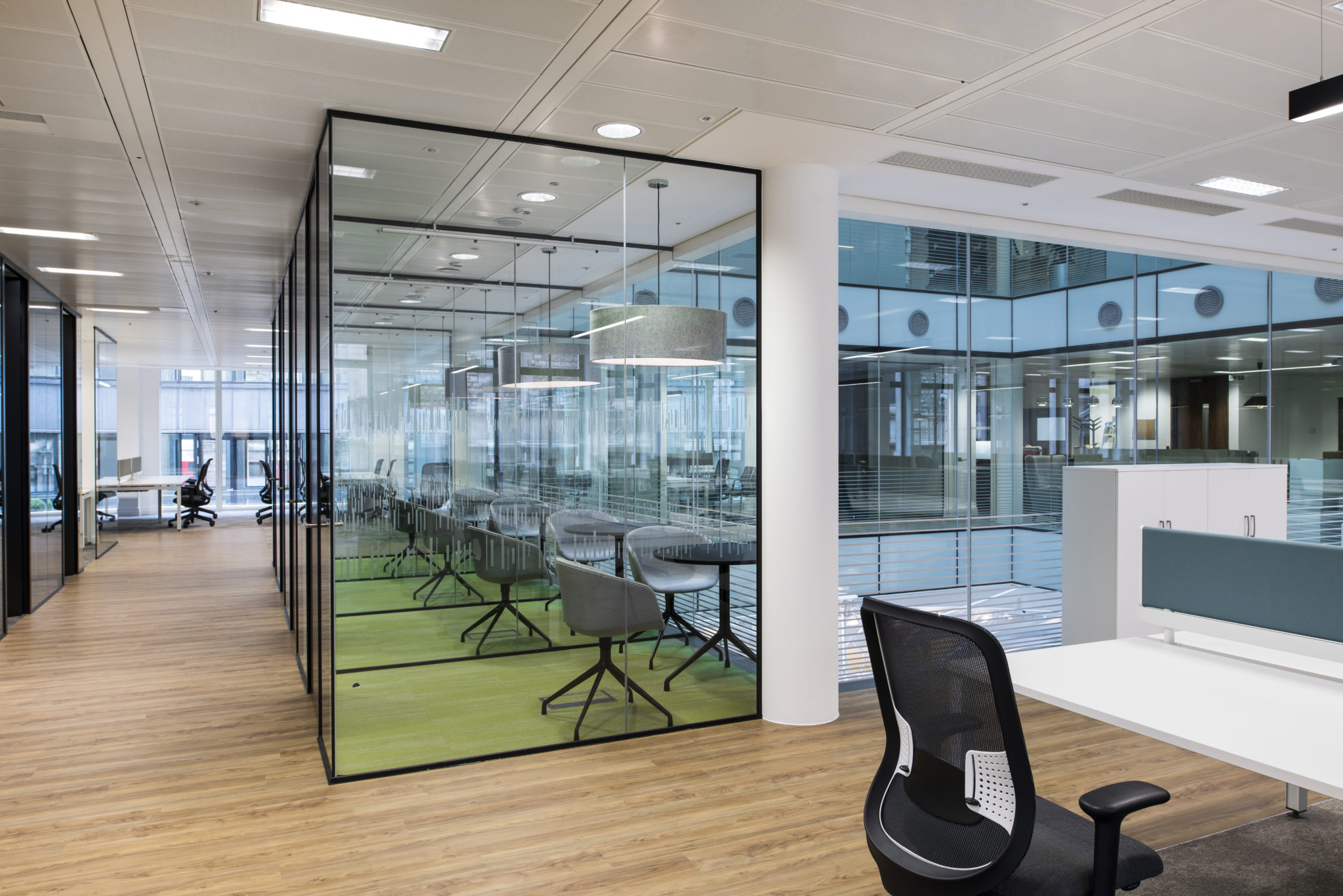Now that we’re all walking around with smartphones, taking images of our work has never been easier. But are they good enough, and could they be much better? FIS technical director Joe Cilia met up with interior and architectural photographer Marek Sikora to ask “what makes a good picture?” and provide some useful pointers for fit-out contractors.
“Light is one of the most important things to consider,” highlighted Mr Sikora. “Especially where glazed partitions are the main subject. This is because glass will reflect light and alter images. It will even alter colour.”
How many of us consider this when we snap away to get the latest images for social media or just a quick photo as our entry to the FIS Contractors Awards?
Mr Sikora recommends taking time to visit the site before completion to understand the impact of daylight on the space at different times of day. He said: “Take your time. If the aspect is easterly, perhaps it’s better to come back in the afternoon when the lighting is softer. Ideally, aim for a time when the light levels outside are similar to those inside, as this avoids harsh shadows and contrasts; unless, of course, that’s what you’re looking to achieve.”
Moving on to composition and it’s important that the vertical lines are all vertical. Avoid lenses that distort and check that the camera is level. You can do this using the grid overlay on all cameras or using a multipurpose spirit level. A tripod is a must for any good image, as it allows you to consider the image, look for things like chairs that don’t align, a reflection of the camera or a smudge on the glass before taking a series of images and only noticing it later.
There are a number of tips when it comes to composition which are centred on perspective and symmetry. Look at any good picture and it often has points of interest that are composed using the ‘rule of thirds’ – this is where the overlay grid comes into its own. The rule of thirds involves thinking about your image using two horizontal lines and two vertical lines and positioning the important elements in your desired photo along those lines, or at the points where they meet. Consider placing something of interest like a chair in the foreground on one of these ‘thirds’ so your eye is led into the picture.
Generally, a manual setting is preferable to the automatic one, which works by making its own calculation based on light levels and can leave some detail in the dark. Set the camera or even a smartphone to manual using an app, and adjust the exposure and ISO setting. If your shutter speed setting is anything less than 1/125th of a second, you need to use a tripod, and even then, use a remote control or use the timer to avoid shake when you press the shutter, otherwise your image could have blurry movement.
A tripod also allows you to consider the composition, which may often be improved by setting the camera lower than you might normally think to do. The photograph above showing glass partitioning was taken at about 1.2m from the floor. Eye height is nearer 1.5m, which would distort the vertical lines and unbalance the gap between the subject at the ceiling and floor level.
Another tip is to think about your audience and what you want the image to say about you, your project and your company. What expectation are you looking to match? Where will the image be used? For example, a site progress image will be different from one being used for a brochure or website – different again for social media.
Mr Sikora suggests: “Think about the message you want the image to carry. This is important as you might only get one chance to impress. So, check if it’s a landscape or portrait shot that you need – or maybe both.” “Cropping was something I used to do,” he added, “but I don’t anymore because it reduces the image quality. You should aim to compose and produce a final image by adjusting your position, the height and angle of the camera.”
So, how do you find a professional photographer for that hero shot? Mr Sikora’s final piece of advice is to start with an internet search, look for commercial photographers working with interiors then look only at the images and find photographers whose images are close to the style you want. Send a brief to a selection of these photographers and see who responds. You’ll need to be able to work with the individual photographer, so take time talking with them before making your final choice. Marek Sikora’s work can be seen at www.mareksikora.com, on Instagram (mareksikoraphotography).
FIND OUT MORE
JOE CILIA
FIS technical director


